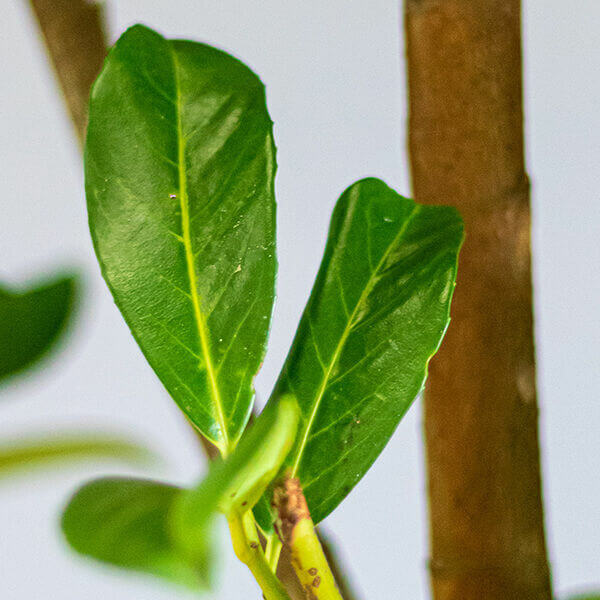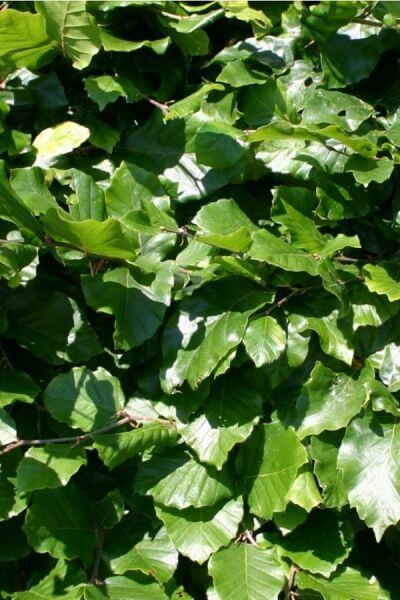Native Hedge Plants For Wildlife Gardens
Native Hedge Plants For Wildlife Gardens
Blog Article
Hedge Plants For Noise Reduction
Boost your garden's allure with lush hedge ranges such as Yew (Taxus), Thuja, Laurel, Photinia, and Bamboo, celebrated for their structural integrity and ecological advantages.
Yew and Thuja offer evergreen coverage and winter season resilience, while Laurel uses rapid development and broad, fragrant leaves.
Photinia adds seasonal appeal with its vibrant red foliage, and Bamboo provides a low-maintenance, serene atmosphere.
These hedges enhance air quality, decrease sound, and create tranquil, personal spaces.
Correct planting, spacing, and maintenance guarantee energetic development and environmental consistency.
Check out how these rich ranges can elevate your garden's charm and wellness.
Key Takeaways
Change Your Garden With Lush Hedge Ranges
- Select Yew for its dense, evergreen development and unequaled durability.
- Select Laurel for its fast development and broad leaves, ensuring fast personal privacy.
- Select Photinia for its dynamic seasonal foliage, which turns a striking dark red.
- Make use of Bamboo for a low-maintenance, winter-hardy hedge with aesthetic appeal.
- Space plants 2-3 per meter and prune routinely for optimal growth and health.
Popular Hedge Plants
When changing a garden with rich hedge varieties, it's vital to consider popular hedge plants such as Yew, Thuja, Laurel, and Photinia due to their unique qualities and benefits.
Yew (Taxus) is highly esteemed for its longevity and dense, green growth, making it a prime choice for withstanding landscapes.
Thuja is noted for its evergreen foliage and robust winter resilience.
Photinia adds seasonal vibrancy with red leaves that darken in time, producing vibrant visual appeal.
Laurel uses fast development and aromatic, broad leaves, perfect for fast personal privacy.
Furthermore, Bamboo is an exceptional choice for ambiance, providing a low-maintenance, winter-hardy option that enhances the garden's visual with its stylish, swaying canes.
These choices deal with a range of horticultural requirements and preferences.
Advantages of Garden Hedges
Garden hedges use a plethora of benefits, making them a valuable addition to any landscape. These natural barriers are cost-effective to carry out and offer considerable wind protection, boosting air circulation and contributing to sound decrease. The dense foliage of hedges like Thuja and Beech ensures personal privacy by blocking visibility, developing a peaceful and remote environment.
Hedges likewise play an essential role in microclimate policy, offering a steady environment that promotes plant growth and minimizes temperature changes. Their detailed leaf structures filter pollutants, improving air quality and adding to a healthier garden ecosystem.
Furthermore, hedges excel in sound reduction, taking in and deflecting acoustic waves to lower ambient sound levels. This dual performance of offering both visual and acoustic privacy boosts the total serenity and aesthetic appeal of any garden.
Planting and Maintenance Tips
For an effective hedge, meticulous preparation of the planting area is important. Guarantee the soil has appropriate pH and drain to support strong root advancement.
Space the plants properly for the selected types. Water the hedge frequently during its preliminary growth stage, adjusting as needed with seasonal changes.
Execute a organized insect control and disease prevention strategy, using chemical or natural treatments when essential. Regularly examine for aphids, termites, and fungal infections.
Apply mulch to maintain wetness and suppress weeds. Seasonal pruning promotes dense development and air circulation, essential for plant health.
Following these guidelines will help you cultivate a vibrant, well-maintained hedge that boosts the charm of your garden.
Spacing and Trimming Guidelines
Spacing and Cutting Standards
Proper spacing and cutting are important for cultivating healthy, visually appealing hedges. Appropriate spacing ensures each plant receives adequate nutrients, light, and air flow.
Follow these guidelines for optimal hedge upkeep:
- Spacing: Position hedge plants 2-3 plants per meter to motivate robust growth.
- Pruning Techniques: Routine pruning is necessary for maintaining wanted hedge height and shape. Trim new growth in summer and cut back older wood during winter.
- Seasonal Care: Adjust cutting techniques and schedules according to seasonal requirements to ensure plant health.
- Hedge Height: Regularly display and cut to preserve the preferred hedge height and attain consistent aesthetic appeals.
Following these steps will guarantee your hedge prospers, improving both the appeal and functionality of your garden.
Choosing the Right Hedge
Picking the Right Hedge
Selecting the proper hedge involves assessing factors such as fully grown height, foliage density, and ecological resilience. Effective hedge plant choice requires comprehending each species' growth qualities and site-specific adaptability.
For instance, Yew (Taxus) provides excellent durability and dense development, while Thuja is notable for its winter season durability. In addition, considering upkeep requirements is crucial; fast-growing types like Laurel or Privet demand regular cutting, whereas low-maintenance alternatives like Bamboo or Ivy may be more effective for those looking for minimal maintenance.
Ecological aspects such as soil type, light schedule, and wetness conditions should also assist the choice process. This cautious technique makes sure the picked hedges will prosper, providing both aesthetic and practical benefits to the garden landscape.
Delivery and Planting Guidance
To ensure your hedge plants flourish, they must be delivered by specialized couriers and planted quickly upon arrival.
Follow these important steps for successful planting:
- Soil Preparation: Improve the soil with raw material to enhance drain and nutrient material.
- Planting Depth: Create a trench two times the width and equivalent to the depth of the root ball.
- Watering Methods: Water completely after planting, keeping the soil regularly damp but not filled.
- Mulching: Use a layer of mulch to keep moisture and suppress weeds.
Consumer Assistance and Service
Given the crucial function of timely assistance in horticultural pursuits, our client support group is offered six days a week through telephone, email, and social networks to offer skilled recommendations and swiftly resolve any concerns. Their devotion to quick response times makes sure client satisfaction by solving queries connected to plant health, optimal planting approaches, and upkeep schedules.

Response Time
Within 24 hours
This comprehensive assistance system, strengthened by a stellar 9.3/ 10 client score, highlights our dedication to improving the gardening experience for every customer.
Frequently Asked Concerns
For How Long Does It Consider Hedge Plants to Establish?
Hedge plants usually require one to 3 years to become totally established, with the precise period differing by species and growing conditions.
Reliable care during this vital duration is important for robust development. Consistent watering, vigilant weed control, and proper fertilizer hedging plants application are pivotal in promoting strong root advancement.
For example, fast-growing types like Laurel might develop more quickly, while slower-growing ranges such as Yew might take longer. Thorough maintenance accelerates the establishment procedure, leading to healthy and dense hedges.
What Are the Best Hedge Plants for Privacy?
The concern of the very best hedge plants for privacy includes evaluating evergreen and deciduous options.
Evergreen hedges like Thuja, Laurel, and Cypress provide year-round coverage, guaranteeing constant personal privacy.
In contrast, deciduous hedges such as Beech provide seasonal personal privacy, shedding leaves in chillier months.
Key upkeep pointers for personal privacy hedges consist of routine cutting, fertilizing in spring, and proper spacing-- typically 2 to 3 plants per meter.
Additionally, consistent watering and persistent weed removal are important for promoting healthy, thick development.
Can Hedge Plants Draw In Wildlife to My Garden?
Yes, hedge plants can attract wildlife to your garden by offering vital advantages like shelter, food, and nesting sites, consequently improving regional biodiversity. Yew, holly, and laurel are outstanding for attracting birds, while ivy supports a variety of pests.
However, it's important to keep in mind that there are some downsides, such as increased upkeep to manage bugs and routine upkeep. Carefully selecting and maintaining hedge ranges can help stabilize these drawbacks and benefits, eventually promoting a vibrant and sustainable community in your garden.
Are There Any Blooming Hedge Plants Available?
Yes, there are flowering hedge plants offered that can boost the appeal of your garden.
For example, Elaeagnus, likewise referred to as Olive Willow, produces aromatic white flowers in the fall, adding a touch of sophistication.
Photinia, another popular option, showcases dynamic red leaves that develop into a rich green, developing a dynamic visual result throughout the seasons.
To guarantee these plants grow, it's vital to practice appropriate pruning techniques and seasonal upkeep, such as trimming brand-new growth in the summertime and cutting down in the winter season.
These measures will help keep the health and visual appeal of your blooming hedges.
How Do I Avoid Pests in My Hedge Plants?
To prevent pests in hedge plants, employ natural insect control techniques and preserve appropriate hedge care. Present beneficial insects like ladybugs, which take advantage of hazardous insects, to produce a well balanced environment.
Regularly inspect your hedges for signs of invasion and without delay get rid of any afflicted parts to avoid the spread. Guarantee the health of your hedges by applying well balanced fertilizers and offering sufficient water.
Utilize mulching to retain soil wetness and correct spacing to minimize plant stress and promote robust growth. These practices jointly assist in lessening pest issues and keeping a healthy hedge.
Conclusion
In essence, selecting the right hedge ranges such as Yew, Thuja, and Laurel can change any garden into a relaxing haven. These plants provide year-round plant, enhance visual appeal, and deal practical advantages like noise decrease and wind security.
Proper planting strategies, accurate spacing, constant watering, and seasonal trimming are vital for optimum growth.
Reputable shipment services and skilled customer support guarantee a seamless experience from purchase to planting, making it easier than ever to elevate your outdoor area.
Garden hedges provide a plethora of benefits, making them an important addition to any landscape. These natural barriers are affordable to carry out and provide substantial wind protection, boosting air circulation and contributing to sound decrease. The dense foliage of hedges like Thuja and Beech guarantees personal privacy by obstructing exposure, developing a remote and serene environment.

Pruning Methods: Routine pruning is vital for keeping preferred hedge height and shape. Cut new development in summer season and cut back older wood during winter season.
Report this page